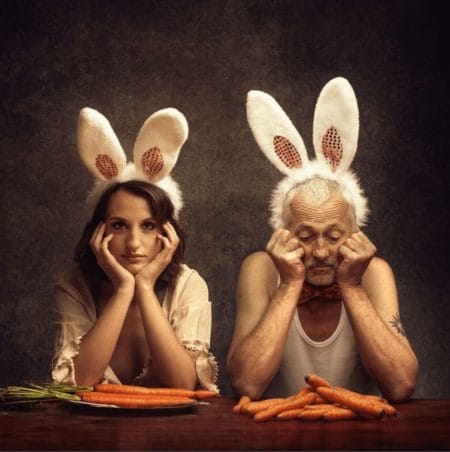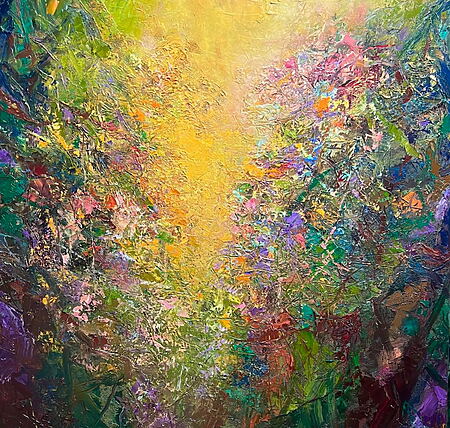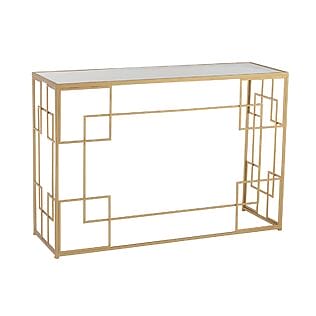Taking the first step into the professional art world after graduation is both exciting and challenging. Many graduates are left with questions after graduation: "How can I best present my work?" " How will galleries or potential buyers notice me?" or " How can I gain visibility for grant applications?"
The answer: a professional portfolio . This starter kit provides information on how to create a portfolio in a targeted manner and at low cost.
Why your own portfolio is so relevant
The portfolio provides an initial overview of your work. It not only reveals the direction your work takes, but also who you are and what you stand for. It's a combination of a business card and a self-portrait . A compelling portfolio often opens doors to internships at renowned studios or semesters abroad.

Photo by Sinitta Leunen @sinileunen, via Unsplash
How do I create a good portfolio?
Depending on the art form, various content may be important. However, some elements should generally be included.
- Select highlights : Don't show all your work; showcase your best projects. Quality over quantity is clearly paramount here.
- Variety : Show your diversity and different styles, while being careful not to lose your artistic individuality.
- Short descriptions : Briefly point out concepts and origins and succinctly explain the techniques used.
- Portrait: A statement about your artistic approach and a brief look at your biography are essential.
- Online presence : Show how you can be found and contacted. List your social media accounts, such as Instagram or LinkedIn, and your website .
To maintain clarity, it's important to make a targeted selection and avoid displaying countless works. Structure and clarity are paramount. A portfolio thrives on clarity and structure.
Digital and analogue HelloPrint works
Portfolios made up of digital works can be sent quickly, easily, and inexpensively. A physical portfolio is the preferred medium, especially for job interviews and exhibitions. The tactile feel of a high-quality portfolio reinforces your confident appearance and the necessary seriousness.
It's worth taking a closer look and focusing on professionalism. Many students use reliable providers like HelloPrint to brochures or presentation folders . This makes it possible for even young artists to create gallery-quality products at a reasonable price.
Given the developments in our world today, a combination of analogue and digital the recipe for success.
Step by step to a convincing portfolio
If you follow these steps, nothing will stand in the way of an attractive portfolio:
1. Select accents
Select a selection of works that represent you. A portfolio with the 10 most outstanding pieces often appears more convincing and meaningful than 30 or more works.
2. Find clarity
Structure your portfolio. There's an introduction about your artistic style and approach, followed by your works. Start with your highlight.
3. Conscious design
Keep your design minimalist and recognizable. Design the portfolio to give your art space. Use custom layouts, white space, and clear typography.
4. Budget orientation
High-quality portfolios can be created without incurring significant costs. Professionalism isn't a question of price. Those who are smart about it can find printing options from affordable providers like HelloPrint, allowing them to present their own work and artwork in high quality.
5. Request feedback
An outside perspective will help you identify your weaknesses and strengths. Ask colleagues and lecturers to take a look at your portfolio.
The best video tutorials and expert tips
One of the most outstanding resource centers for young art students and aspiring artists is and remains the Contemporary Art Issue (CAI) . Julien Delagrange is an art historian, contemporary artist, and founder and director of CAI. Delagrange studied fine arts at Ghent University, Belgium, and has worked for the Centre for Fine Arts (BOZAR) in Brussels, the Jan Vercruysse Foundation , and the Ghent University Library. He has contributed to the international contemporary art scene as an art critic, lecturer, curator, gallery director, consultant, and as an artist.
As an artist, he is represented by the Sabine Bayasli Gallery in Paris, France, and the Space60 Gallery in Antwerp, Belgium.
The following video gives you a perfect introduction to the topic:
Lilaphie answers these questions in this video:
We also found two excellent video tutorials primarily aimed at prospective (graphic) design students. However, art students should also be able to gain valuable insights from them:
How to avoid common mistakes
There are a few things to look out for. These are the following:
- Less is more: Make clear and conscious choices.
- Print quality: The quality of the prints is of high professional importance.
- Relation to the recipient: When creating your portfolio, also consider the recipient. Pay attention to personality and individuality, whether for exhibitions, funding programs, or other applications.
Your portfolio as a door opener
The portfolio is your ticket to the world of professional art. It gives you the opportunity to make your story visible. Quality, structure, and clarity are the most important factors.
The goal is to find smart, cost-effective ways to showcase your impressive portfolio not only digitally but also in a hybrid format. Especially for those just entering the professional scene, it's recommended to start with budget-friendly, high-quality prints with providers like HelloPrint. Your portfolio is your calling card. Use it actively to showcase yourself and your art in the best and most authentic way possible.
FAQ: quick answers for students
How extensive can my portfolio be?
To get an impression of your work, between 8 and 15 selected projects are sufficient.
How important is a printed portfolio?
For exhibitions and job interviews, a printed portfolio reinforces your professional impression.
When do I update my portfolio?
Whenever a strong new project can be published, but at least once per semester.

Owner and Managing Director of Kunstplaza. Publisher, editor and passionate blogger in the field of art, design and creativity since 2011. Successful completion of studies in web design as part of a university degree (2008). Further development of creativity techniques through courses in free drawing, expressive painting and theatre/acting. Profound knowledge of the art market through years of journalistic research and numerous collaborations with actors/institutions from art and culture.

















